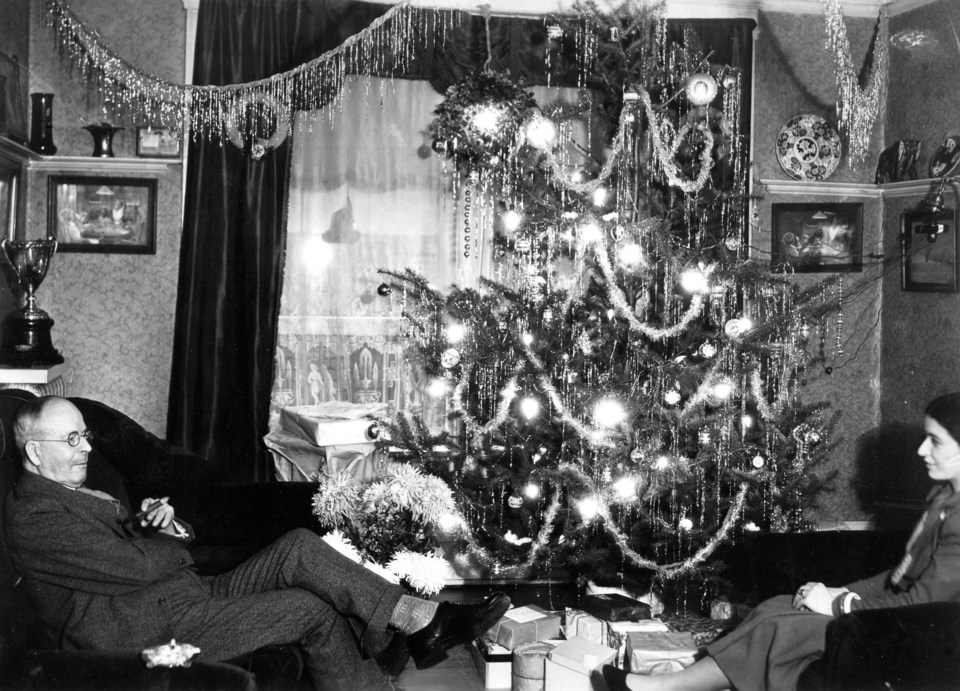A friend moved to Japan 25 years ago and one of the first observations he sent back was the story of a department store Christmas display with a Santa Claus nailed to a crucifix.
Back on this side of the Pacific, a woman I know was astonished when her toddler ran toward a mall Santa calling “Rebbe!” mistaking the man in the white beard for the leader of their Hassidic Jewish sect.
My point — and, as Ellen Degeneres says, I do have one — is that there is a great deal of confusion around some of the mythologies surrounding Christmas — not only in cultures that do not celebrate it, but even among devout Christians and the millions more who celebrate Christmas without a lot of religious trappings.
I recall my own childish confusion when — maybe it was around Christmas time — I wanted to write a letter to God. My mom clarified that one writes letters to Santa but you just talk to God. This was not satisfying to me because, for one, I’ve always been a print guy, and two, sometimes Santa wrote back. (I think this might have had something to do with Woodward’s department store. Not sure.)
Sometimes things are so blatantly obvious we can’t see them. The proverbial forest for the trees is never more evident (or, should I say, invisible) than in the “Christmas” tree. There could hardly be an act or image more laden with pre-Christian pagan and earth-based religious symbolism than bringing a tree into a dwelling and fancying it up in lights and shiny objects.
Like so many other pre-Christian traditions, this one has been co-opted by Christians, yet simply hanging nativity figures on the branches hardly hides the roots of the ritual. Like the spring fertility symbols of eggs and rabbits that are somehow supposed to symbolize the crucifixion or, at the very least, the resurrection of Jesus, the Christmas tree’s relationship to the Jesus story is nonexistent except through the most contorted allegory. (Medieval Germanic Christians chopped down the oak trees their pagan neighbors worshipped and declared that their triangular shape was reminiscent of the holy trinity. Uh-huh.)
Yet these obscure and unholy backstories are part of why I love the Christmas tree.
One of the reasons this time of year is so powerful for so many, even lapsed believers, is the sense of revived tradition and ritual — things that have been in decline over the last few decades. Decorations that have been handed down the generations, songs we hear only now and, not least, the recipes that come out only once a year.
In parts of the world, families have been hauling trees into their homes and decorating them for thousands of winters. How’s that for tradition?
(Another friend of mine measures long epochs by the standard of her centenarian aunt’s lifespan, 500 years being a mere “five Aunt Sylvias.”)
By this standard, in Britain, where most of my family originated, the Christ mas tree is a comparatively new custom, having become popular only after Queen Victoria’s Germanic consort, Prince Albert of Saxe-Coburg and Gotha, popularized the tradition in the 1840s (e.g., not even two Aunt Sylvias ago). And, to be precise, it seems the tradition was not terribly widespread anywhere in Europe until the 15th or 16th century, despite the ancient folkloric roots.
On my Christmas tree, the most treasured items are the few remaining glass figures my grandmother purchased from the Eaton’s catalogue on the first Christmas after she was married, in 1920. Around our tree this year will be a newborn and toddlers who may well be grandparents or great-grandparents by the end of this century. These people, among the most important in my life, from my grandmother to these great nephews and niece, will span 200 years — and across those centuries, the way we celebrate the holidays will probably remain surprisingly familiar, because we pass along these traditions.
This is how things like Christmas trees tenaciously survive, as irrational as they may be in the not-so-clever disguise of the current religious culture that supplanted the theologies that first dragged greenery into a cave at the winter solstice.
* The Yule concert by the Universal Gospel Choir last weekend (previewed in this column two weeks ago) was a roof-raiser that made my holiday season. UGC is one of Vancouver’s cultural treasures. Find them on Facebook for future opportunities to hear these magnificent multicultural, multi-faith voices. End of rave. Merry Christmas and/or happy holidays to all!
twitter.com/Pat604Johnson



